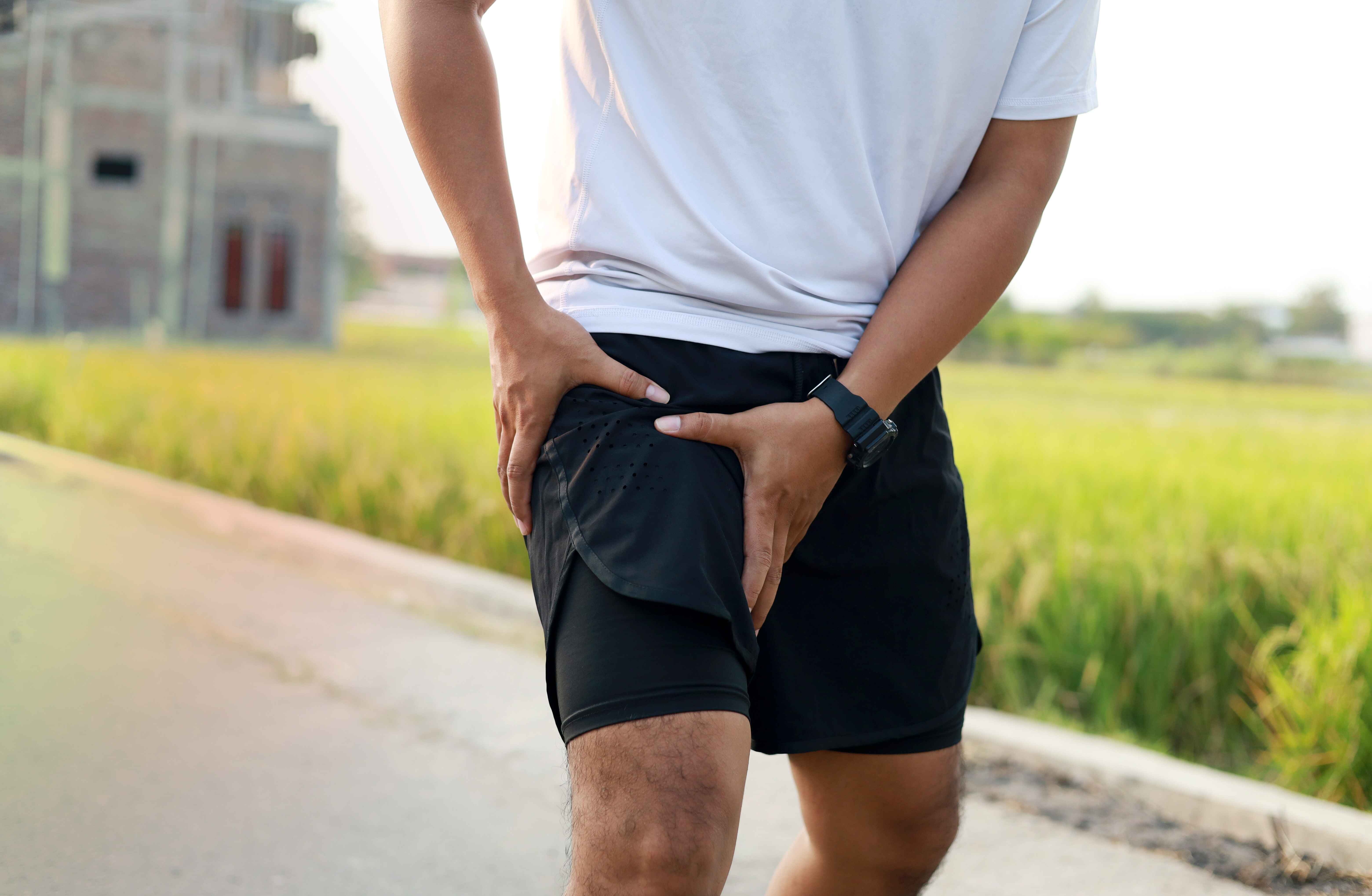Groin Pain: Causes, Diagnosis, Treatment & Prevention
Written By: Dr. Mohamed Ghanem
Updated On:January 26, 2025

What is Groin Pain?
When someone has groin pain, they are experiencing discomfort where the legs start and the abdomen ends. Sometimes, the words "groin" and "testicle" are used synonymously. However, testicle and groin pain are not the same.
Causes of Groin Pain
The typical causes of groin pain include the following:
- Ligaments, tendons, or muscles in the leg that have been pulled -- People who participate in sports like football, soccer, and hockey frequently struggle with this issue. The term "sports hernia" is occasionally used to describe this ailment, although the term is inaccurate because there is no hernia present. Moreover, the testicles may experience discomfort. Rest and medication are best for relieving groin pain.
- Hernia: Internal organs might press through a weak area in the abdominal muscular wall when there is a hernia. The weak region must be surgically fixed.
- Hip joint disease or damage.
Less prevalent factors include:
- Inflamed testicles, epididymitis, and associated tissues
- Testicular torsion is the term for the spermatic cord's twisting around the testis.
- Testicular cancer
- Urinary stone
- Small or big intestine inflammation
- A skin condition
- Enlarged lymph nodes
- Infected urinary tract
Symptoms of Groin Pain
The following are signs of a groin pull:
- The inside of the thigh and the groin are both painful and uncomfortable.
- The anguish felt when bringing your legs together
- Difficulty raising your knee
- During the injury, there may be a popping or cracking sensation followed by intense pain.
When to see a doctor for Groin Pain?
Get in touch with your doctor if you experience any of the following:
- unjustified groin pain,
- swollen scrotum,
- pain in the scrotum,
- pain in one testicle,
- alterations in skin tone,
- testicular enlargement,
- or blood in the urine.
Groin Pain Risk Factors
Some variables that lead to the development of groin pain include poor rehabilitation following an injury, muscular lassitude, fatigue, inadequate training of the muscles, a decline in fitness, poor flexibility in the groin, muscular rigidity, and inadequate core and pelvic stability.
Groin Pain Diagnosis
The doctor will evaluate your groin pain symptoms and also ask you about any recent physical activities. They might request to do the following tests in addition to a physical examination:
- A doctor can evaluate if the pain in your groin is being caused by an ovarian cyst, a testicular tumor, or a bone fracture using X-rays and ultrasounds.
- Depending on the outcomes of a blood test, your doctor can identify whether an infection is the cause of your groin pain.
- The doctor will ask you to cough after putting one finger in your crotch. Coughing raises the pressure in your abdomen and pushes your intestines into the opening, making hernias easier to detect.
Groin Pain Treatment
The underlying reason for your groin pain will determine the best course of treatment.
- Home care: The best course of action is generally at-home therapy if your groin discomfort is the consequence of a strain. Your strain will spontaneously recover if you rest and avoid strenuous activity for 4 to 8 weeks. To control your pain and discomfort, you can take painkillers like acetaminophen and ibuprofen. Applying cold packs many times a day might also be beneficial.
- Medical Treatment: A doctor may recommend anti-inflammatory drugs to assist treat your groin pain symptoms if home care techniques are ineffective for your strain. A doctor can suggest physical therapy if those drugs don't relieve your symptoms and you experience recurrent strains.
- Surgery: Your groin pain may be brought on by a bone fracture, in which case surgery may be necessary to fix the bone. If an inguinal hernia is what's causing your discomfort, surgery can also be required.
Groin Pain Prevention
You may take a few measures to prevent groin discomfort or the factors that cause it.
One method to assist athletes to avoid injury is moderate stretching. Before engaging in physical activity, warming up slowly and steadily can help lower your chance of suffering a groin injury, especially if you do this often.
Hernias can be avoided by maintaining a reasonable weight and exercising caution while carrying large things.
Increasing your water intake and maintaining optimum hydration may help you avoid kidney stones. Making efforts to develop strong bones, such as consuming adequate calcium and vitamin D, may reduce your risk of suffering from bone fractures.
References
Hölmich, P., Phillips, M., Heaven, S., Simunovic, N., Philippon, M. J., & Ayeni, O. R. (2016). Athletic groin pain: a systematic review of surgical diagnoses, investigations and treatment. British journal of sports medicine, 50(19), 1181-1186.
Jørgensen, S. G., Öberg, S., & Rosenberg, J. (2019). Treatment of longstanding groin pain: a systematic review. Hernia, 23, 1035-1044.
Machotka, Z., Kumar, S., & Perraton, L. G. (2009). A systematic review of the literature on the effectiveness of exercise therapy for groin pain in athletes. BMC Sports Science, Medicine and Rehabilitation, 1, 1-10.
Suarez, J. C., Ely, E. E., Mutnal, A. B., Figueroa, N. M., Klika, A. K., Patel, P. D., & Barsoum, W. K. (2013). Comprehensive approach to the evaluation of groin pain. JAAOS-Journal of the American Academy of Orthopaedic Surgeons, 21(9), 558-570.
Meet our doctors from the Orthopaedics department





















































